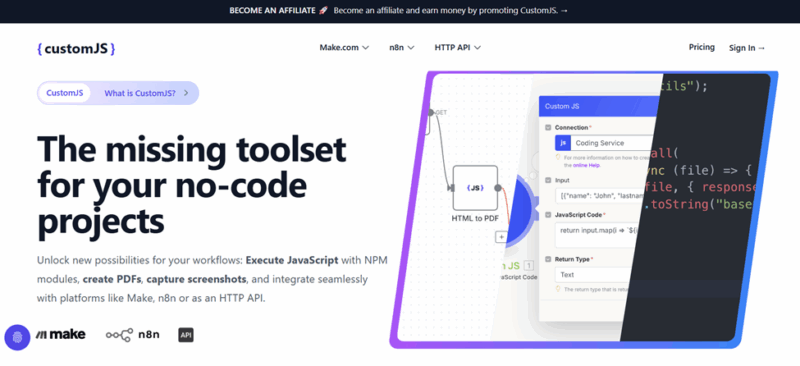
Organizations aiming for sustainable growth increasingly depend on digital ecosystems that are both flexible and resilient. The digital environment is a connected framework that brings together infrastructure, data, applications, and people. Growth in today’s markets requires systems that can scale quickly, recover from disruptions, and continuously deliver value. Businesses that treat their ecosystems as static often struggle with inefficiencies, fragmentation, and limited visibility.
Resilience demands building structures that can evolve. When ecosystems are designed to adapt, companies can introduce new technologies, connect with partners, and meet regulatory requirements without rebuilding from the ground up. A strong digital ecosystem creates stability, but it also opens the door to innovation and long-term competitiveness.
Reusable Data Assets Powering Business Applications
Reusable assets make it possible for organizations to apply information across a variety of functions without constantly starting from scratch. A well-curated dataset can support marketing campaigns, inform product development, and guide operational planning. This reusability creates efficiency and consistency, since every department works from the same reliable foundation stemming from the usage of data products. The more structured the data assets, the easier it becomes to scale their use across applications.
But what are data products? They are curated, packaged, and reusable assets built to support diverse business use cases. Unlike raw data that requires significant preparation, data products are designed to be applied directly by teams across different domains. They transform information into a shared resource that eliminates duplication and strengthens decision-making.
Strengthening Interoperability Between Platforms
Businesses often run multiple systems to cover different aspects of their operations. Without interoperability, those systems function in isolation, creating barriers to collaboration and efficiency. Interoperability brings those platforms together, allowing information to flow freely and processes to work seamlessly across functions. When platforms communicate effectively, the organization gains speed and accuracy in both decision-making and execution.
Moreover, external vendors, suppliers, and customers can connect to the ecosystem without extensive custom integrations. The ability to exchange information smoothly builds trust, reduces complexity, and lowers costs. A digital ecosystem that prioritizes interoperability avoids fragmentation and remains resilient as it grows in scale and scope.
Integrating Legacy Systems into Modern Architectures
Many organizations continue to depend on legacy systems that hold valuable data or perform critical tasks. Completely replacing those systems is costly and disruptive, but leaving them disconnected creates gaps. Integration offers a way to keep the strengths of legacy platforms while connecting them to modern architectures. With the right strategy, older systems can continue to add value without limiting innovation.
Integration also extends the lifespan of past investments. Linking legacy systems to cloud platforms, analytics tools, or modern applications allows businesses to create a hybrid environment that balances stability with modernization.
Embedding Security Throughout the Ecosystem
Security that is applied only as an afterthought often leaves organizations vulnerable. Embedding protection at every level of the ecosystem makes it part of the structure rather than a separate layer. Applications, networks, and data flows all need safeguards that operate continuously without interrupting performance.
Resilient ecosystems also adopt adaptive security measures. Monitoring tools and AI-driven detection systems can identify unusual patterns and respond before issues escalate. Security that evolves with the ecosystem keeps pace with new technologies, emerging risks, and changing compliance standards.
Supporting Agility Through Modular Design
Rigid systems make adaptation slow and costly. Modular design introduces flexibility by allowing organizations to update, replace, or expand individual components without overhauling entire systems. Each module can evolve independently, which reduces disruption and speeds up innovation. This flexibility helps ecosystems remain relevant as technology and market conditions change.
Similarly, new tools or services can be introduced in specific areas and scaled up if they prove effective. This lowers the risk of adopting emerging technologies while still keeping the ecosystem dynamic.
Designing for Continuity During Disruptions
Unexpected disruptions, from system failures to global crises, test the strength of digital ecosystems. Continuity planning means building workflows, infrastructure, and data strategies that can keep operations running under pressure. Redundant systems, backup protocols, and distributed architectures all contribute to continuity by reducing single points of failure. Organizations with strong continuity measures can recover faster and maintain customer trust.
Continuity is also about foresight. Scenario planning, risk analysis, and simulation tools help leaders prepare for challenges before they occur. Digital ecosystems designed with continuity in mind are better equipped to handle disruptions without losing momentum.
Incorporating AI for Smarter Decision-Making

Artificial intelligence adds intelligence to ecosystems by transforming data into predictive insights. AI tools analyze patterns, forecast outcomes, and recommend actions in ways that manual methods cannot match. This capability allows leaders to anticipate demand, optimize operations, and uncover opportunities hidden within large datasets. AI reduces guesswork and strengthens confidence in strategic choices.
Apart from analysis, AI supports automation as routine tasks can be managed by intelligent systems that learn from outcomes and adapt over time. Predictive analytics combined with automation frees employees to focus on complex challenges.
Building Ecosystems Around Customers
Growth depends on how well organizations understand and serve customers. Ecosystems that place customers at the center create stronger relationships and deliver consistent value. Mapping workflows, data, and applications around customer journeys means that every touchpoint aligns with expectations.
Plus, customer-centric ecosystems can adapt as preferences change. Real-time feedback, usage data, and engagement metrics help businesses refine their services continuously.
Encouraging Innovation
Closed systems limit experimentation and make collaboration difficult. Open integration strategies, supported by APIs and shared standards, give organizations the ability to test new ideas and connect emerging technologies without heavy custom development. Innovation becomes easier when systems are designed to interact openly.
Moreover, an ecosystem built with open integration attracts partners. External developers, suppliers, and collaborators can connect more readily, contributing to the overall strength of the environment.
Expanding Partner Networks
Strong ecosystems are rarely built in isolation. Partnerships with vendors, distributors, and industry peers extend reach and create new possibilities. Shared digital standards simplify collaboration by reducing the need for complex integrations or custom solutions. When organizations adopt common protocols, information moves more smoothly across networks.
A business connected to multiple partners through unified systems can adapt quickly if one partner faces disruption. Networks grow stronger when participants share the same digital foundation, creating opportunities for expansion and long-term value.
Aligning Growth with Regulatory Compliance
Regulations evolve quickly, and failing to keep pace can expose organizations to penalties or reputational harm. Ecosystems built with compliance at their core minimize that risk. Embedding policies, automated checks, and reporting functions into workflows keeps organizations aligned with current requirements.
Compliance-driven design also builds trust. Customers and partners feel more confident working with organizations that demonstrate responsibility in handling data, security, and industry standards. Aligning ecosystem growth with compliance means expansion happens responsibly and sustainably.
Resilient digital ecosystems provide the basis for sustainable growth. Organizations that invest in resilience withstand disruption while also positioning themselves for continuous innovation and long-term value. Growth in the modern era is best supported by ecosystems designed to evolve, connect, and deliver consistently across every layer of business.










